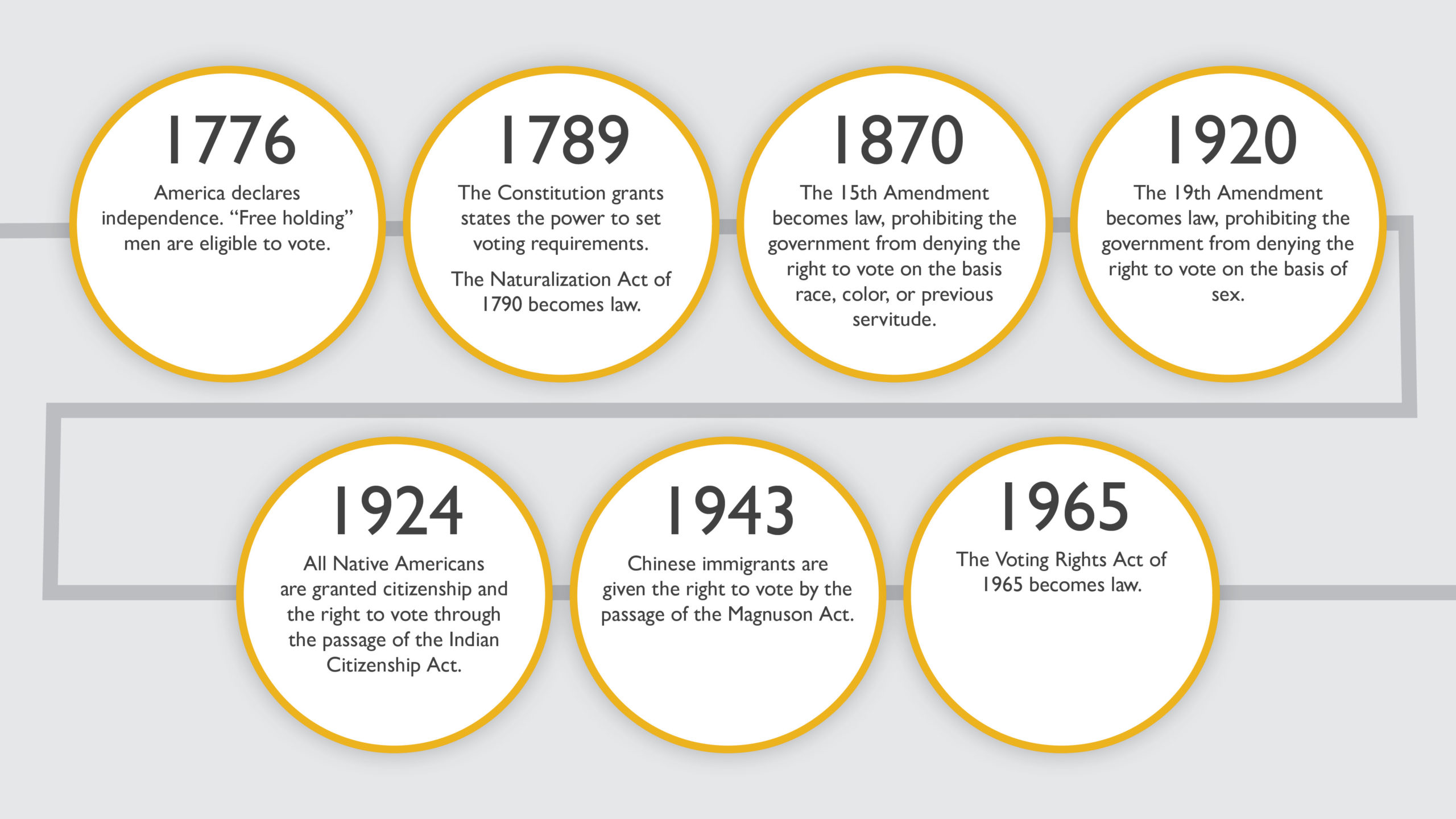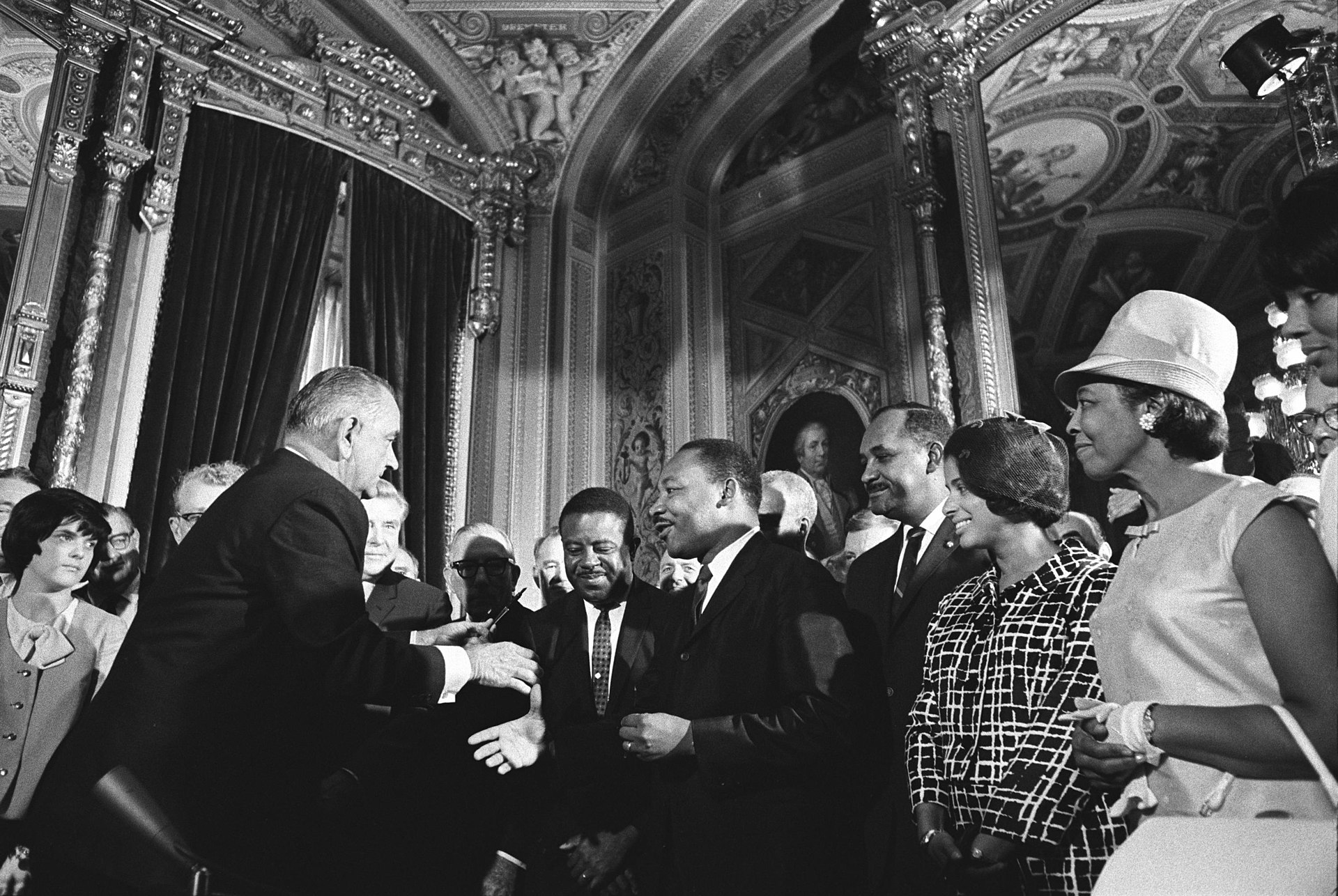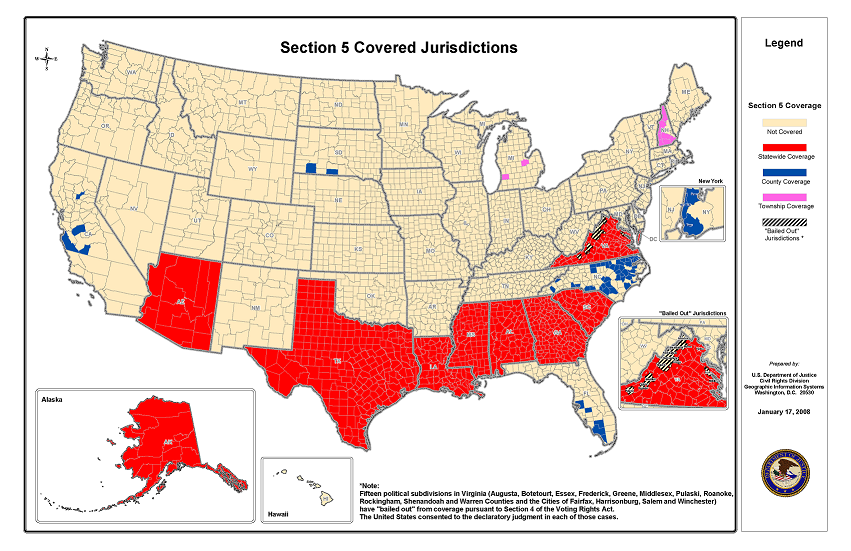Above: States and counties encompassed by the act's coverage formula in January 2008 (excluding bailed-out jurisdictions). Several counties subsequently bailed out, but the majority of the map accurately depicts covered jurisdictions before the Supreme Court's decision in Shelby County v. Holder (2013), which declared the coverage formula unconstitutional.
Modern Voter Suppression Tactics
In addition to new voter ID laws, closure of polling places and cutbacks to early voting, states also began purging voter rolls, creating caging lists, attacking felon voter protections and enacting gerrymandering. Combined, these laws create a perfect storm of voter suppression, often targeted at communities of color.
To learn more about each voter suppression tactic, check out this article by the American Civil Liberties Union (ACLU).
In the 2016 Presidential Election, it is estimated that up to 17 states may have had restrictive voting laws in place. On the eve of another Presidential Election, many are worried these restrictive laws will negatively impact voter turnout once again. As late as August 2020, President Trump announced his opposition for additional funding for the United States Postal Service (USPS) in order to make it more difficult to deliver mail-in ballots.
Looking Ahead
When discussing voting rights in the United States, voter suppression has been a part of the nation’s history just as equally as rights granted. For more than one hundred years, elected officials have made a targeted effort to disenfranchise certain Americans, enforce structural racism and uphold white supremacy. In the 21st Century, many of these elected officials continue to focus on communities of color, thinking of new ways to disenfranchise Americans from their constitutional right to vote.
However, the fight is not over. Now more than ever, it’s incredibly important for Americans to vote. Your voice does matter. Here are 3 things you can do:
1. In order to protect your voice, it’s important to know your rights.
The ACLU has put together a comprehensive plan to follow if you or someone you know face any issues while voting. Read it here.
2. You can also tell your Senators to pass the Voting Rights Advancement Act (VRAA),
which would enforce voting rights throughout the country. The House has already voted to pass the VRAA, but it is currently waiting in the Senate. Find more information here.
3. Finally, make a comprehensive plan on how to vote this year.
With the COVID-19 pandemic, it’s important to determine what type of voting is available for you. For more information, check vote.org.
Most importantly—don’t give up hope. Together, we can fight for more inclusive tomorrow.
To learn more about voter suppression, consider tuning in to our upcoming program Unpacking Voter Suppression: A Virtual Discussion with Gloria Steinem, scheduled on Thursday, October 22 at 7pm.






